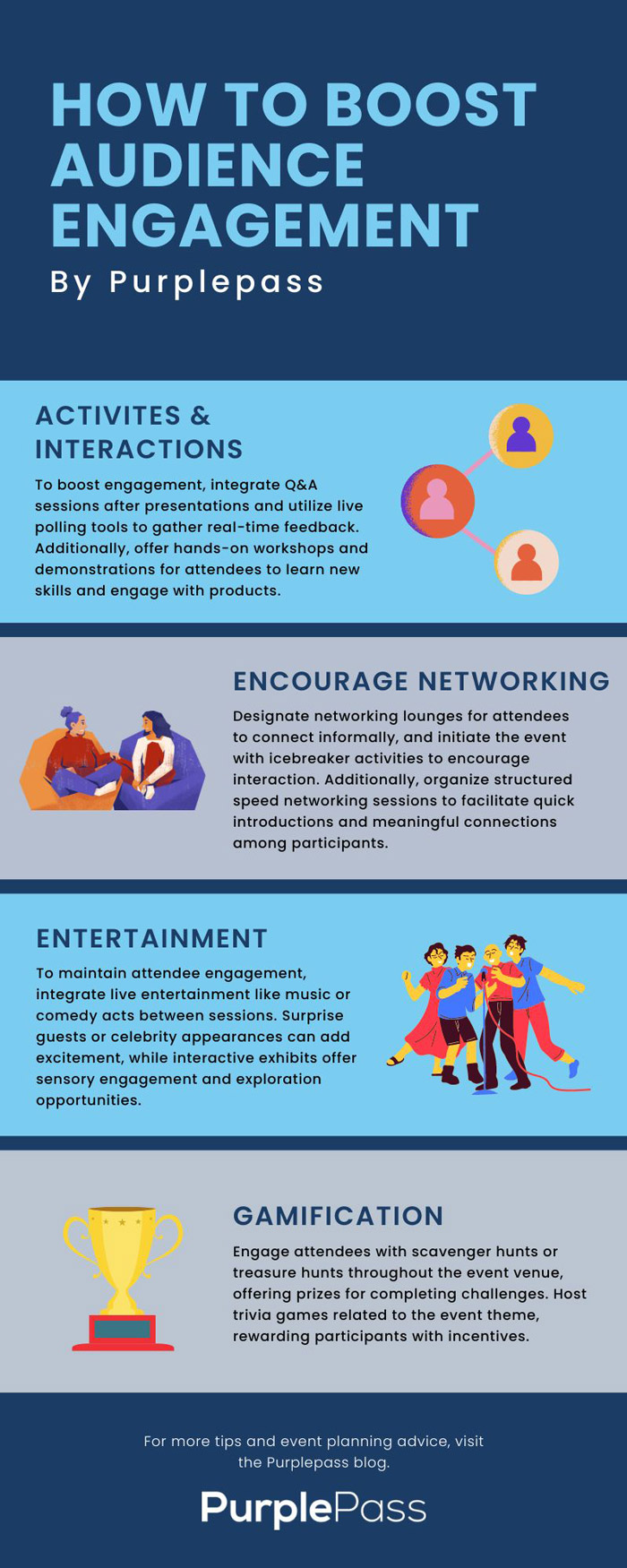Strategies to Maintain Audience Engagement Across Different Event Types
Audience engagement is the lifeblood of any successful event. Whether you're hosting a conference, a concert, a trade show, or a product launch, keeping attendees engaged and energized throughout the event is crucial for its success. In this comprehensive guide, we'll explore common strategies to stimulate constant engagement and excitement for attendees across various types of events.

Understanding the Importance of Audience Engagement:
Before delving into specific strategies, let's first understand why audience engagement is essential for event success:
-
Retaining Attention: Engaged attendees are more likely to pay attention to the content, speakers, or performances, ensuring that the key messages of the event are effectively communicated and retained.
-
Fostering Participation: Engaged attendees are active participants rather than passive observers. Encouraging participation leads to a more dynamic and interactive event experience, fostering connections and collaboration among attendees.
-
Creating Memorable Experiences: Engaging events leave a lasting impression on attendees, increasing the likelihood of positive word-of-mouth recommendations, repeat attendance, and brand loyalty.
Strategies for Maintaining Audience Engagement

1. Interactive Content and Activities:
-
Q&A Sessions: Incorporate interactive Q&A sessions after presentations or performances to encourage audience participation and facilitate dialogue between speakers and attendees.
-
Live Polling and Surveys: Use live polling tools or mobile apps to collect real-time feedback from attendees and gauge their opinions on relevant topics or issues.
-
Workshops and Demonstrations: Offer hands-on workshops, demonstrations, or interactive sessions that allow attendees to learn new skills, engage with products, or participate in immersive experiences.
2. Networking Opportunities:
-
Networking Lounges: Create designated networking lounges or areas where attendees can meet and connect with fellow participants, speakers, or exhibitors in a relaxed and informal setting.
-
Icebreaker Activities: Start the event with icebreaker activities or networking games that encourage attendees to interact with each other and break the ice.
-
Speed Networking: Organize structured speed networking sessions that facilitate quick introductions and conversations between attendees, helping them make meaningful connections in a short amount of time.
3. Entertainment and Performances:
-
Live Entertainment: Incorporate live entertainment such as musical performances, comedy acts, or interactive games to keep attendees entertained and energized between sessions or presentations.
-
Surprise Guest Appearances: Surprise attendees with special guest appearances or celebrity speakers to add excitement and intrigue to the event.
-
Interactive Exhibits: Set up interactive exhibits or installations that engage multiple senses and encourage attendees to explore and interact with the content.
4. Gamification:
-
Scavenger Hunts: Organize scavenger hunts or treasure hunts that require attendees to explore different areas of the event venue and complete challenges or tasks to win prizes.
-
Trivia Games: Host trivia games or quizzes related to the event theme or industry, encouraging friendly competition and rewarding participants with prizes or incentives.
-
Reward Systems: Implement a reward system where attendees earn points or badges for participating in activities, attending sessions, or visiting exhibitor booths, with rewards redeemable for prizes or discounts.
5. Technology Integration:
-
Event Apps: Develop a dedicated event app that serves as a central hub for attendees to access event information, interact with speakers and fellow attendees, and participate in interactive activities and polls.
-
Live Streaming: Offer live streaming of keynote presentations, panel discussions, or performances for remote attendees who are unable to attend the event in person, enabling them to participate virtually and engage with the content in real time.
-
Augmented Reality (AR) and Virtual Reality (VR): Integrate AR or VR experiences into the event to provide immersive and interactive content that enhances the overall attendee experience and creates memorable moments.
Conclusion:
In conclusion, maintaining audience engagement is essential for the success of any event, regardless of its type or scale. By implementing a combination of interactive content, networking opportunities, entertainment, gamification, and technology integration, event organizers can stimulate constant engagement and excitement for attendees throughout the event journey. By keeping attendees actively involved and entertained, events can leave a lasting impression, foster connections, and ultimately achieve their goals and objectives.






